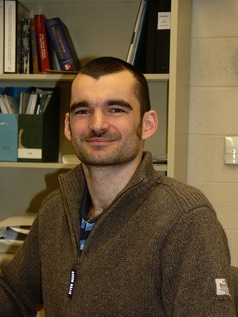
Simulation of Cement Corrosion
Here are links to animations of the results from some of my recent simulations of cement corrosion:
Distribution of calcium silicate hydrates
Distribution of calcium aluminate hydrates
Research Interests
My research is focused on modeling and monitoring the chemical degradation of concrete and reinforcing steel exposed to an aggressive environment - acid gas (CO2), oxidative species (O2) or salt. In that context the main degradation features are:
•Carbonation of concrete and chloride ingress
•Corrosion of steel, which is strongly related to carbonate alkalinity (HCO3-, CO32- content and ratio), and other anions (Cl-, SO42-, HSiO3-).
My approach is strongly based on the coupling of numerical simulation and modeling (transport and reaction kinetics, thermodynamics) and experimental evidence using numerous tools like solid analysis (OM, SEM, EDS, XRD, XPS, µ-Raman), electrochemical measurement (Ecorr, EIS) and others…
Now I am working within the Carbon Sequestration program, collaborating directly with Prof. Jean Prévost, Dr. Dick Fuller, and Prof. George Scherer. We are modeling the rate of corrosion of cement in an oil well exposed to carbonated brine, using the experimental results of Andrew Duguid.
Biography
Bruno is currently a Research Associate at Princeton University. He received his Ph.D. in Materials Science in 2005 from INSA (National Institute of Applied Science) in Lyon, France. His doctoral work, performed within the CEA Labs (French Atomic Commission), concerned the reliability of concrete structures exposed to the atmosphere, with a special emphasis on concrete carbonation and steel corrosion, in the context of nuclear waste storage.
His work is now focused on the simulation of cement paste behavior in carbonated saline aquifers in order to assess the CO2 leak risks from wells.